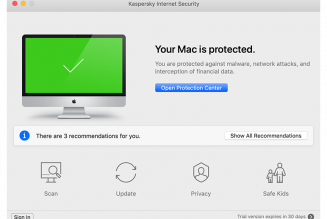The arrival of COVID-19 and its impact on the economy threatens to undo the careful technology investments made by businesses.
Over the past decade, digital-centric and data-driven business environments have been gaining momentum, taking advantage of new breakthroughs such as cloud, advanced process automation, data analytics, remote working, etc. But now there is a real chance that these investments could be undone or, more likely, fail to reach their intended potential.
It’s ironic, considering that these same investments have been helping companies adapt to the changes created by the pandemic. For example, those organisations that could safely and confidently switch to employees working from home rely on their modern digital environments. Now all that is under threat, since IT budgets are under even more strain than before as COVID-19-related cost-cutting becomes a priority.
39% of CIOs expect their budgets to be cut and more than half of respondents to a PWC CFO survey said that IT spending would come under increasing scrutiny. This trend is concerning because those budgets were already under pressure. Doing more with less has been the CIO’s mandate for a while now, made possible by the newer digital technologies.
/* custom css */
.tdi_3_cee.td-a-rec-img{ text-align: left; }.tdi_3_cee.td-a-rec-img img{ margin: 0 auto 0 0; }
If companies plan to strain their IT departments further, they have to look beyond only cutting budgets. They need to consider creative ways to lower IT costs while increasing their IT resource capacity.
In general, managed services are an answer to this. In a managed service model, a service provider is responsible for handling specific IT demands, including skills and infrastructure, to an area that is quite close to the business’ core activities. This critical proximity distinguishes it from a outsource model, which focuses on peripheral services.
The managed service approach has been very effective at handling crucial IT demands, such as security and device management. But one area is still routinely overlooked, except that the shift forced by COVID-19 has revealed its clear potential.
I’m talking about managed data services, specifically data storage and recovery. Data is a crucial part of Disaster Recovery (DR), which itself is a critical function for any business. Executives are often acutely aware of how vital DR is.
Unfortunately, this could encourage a major prejudice among business leaders: the idea that a seen employee is a productive employee, and this view is sometimes replicated when outsourced managed services providers are onboarded. When it comes to DR, many leaders believe that as long as DR efforts- are seen, then the DR strategy is working and effective.
But, no, that is not true. Managing data for functions, such as DR, is a 24/7 job. A manager might feel better seeing an employee working on DR, but they don’t always realise that job goes on after hours, over weekends, and in the middle of the night.
If you task internal employees with this, costs would skyrocket, resources would be thin and the burden of this task could be detrimental to the rest of the IT Team. Here, an outsourced provider can deliver so much more for the business.
I have spent years arguing this point with business leaders, but they just couldn’t let go of their instincts that ‘seen’ equals ‘productive’. Then COVID-19 arrived, and the subsequent lockdowns forced their hands. The same prejudice against remote working is being shattered as companies realise they can trust their people to work when not seen. The old fears left and are being replaced by new potential.
This same change in attitude can be applied to managed data backup and recovery services. Data and DR are very important, so it’s natural to want to see DR in action. But that is not necessary. You can trust such a service to do its job and deliver massive value while keeping costs low.
As IT budgets come under pressure, managed data backup and recovery services can take care of an essential part of business technology while simultaneously freeing your own IT professionals to focus on other tasks.
Your IT people are often jacks of all trades. They have many skills and the appetite for learning more, applying that knowledge to solving your business challenges. Having them look after data management and recovery is a poor use of their capacity and likely to cause problems.
One person is fallible, especially if they have to babysit data 24/7. But a managed service team takes care of that so that your IT people can take care of business – even when budgets are shrinking during times of uncertainty.
Business leaders need to realise how important their data is to continuity and the benefits managed services can offer the organisation, whether it be cost savings, data protection or opening up resources within the company to worry less about the data and keeping the lights on and shift their focus towards innovation and accelerating digital transformation strategies.
By Hemant Harie, MD at Gabsten Technologies










